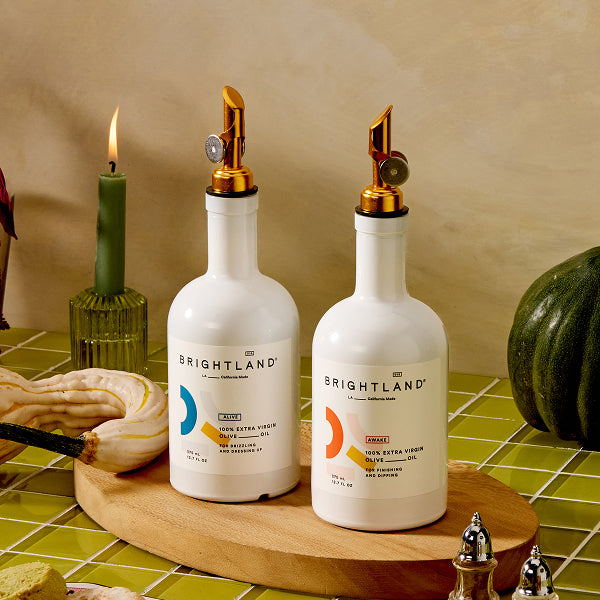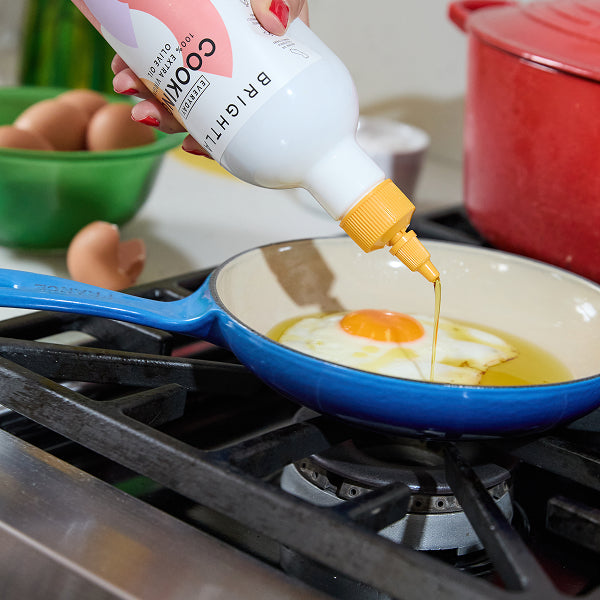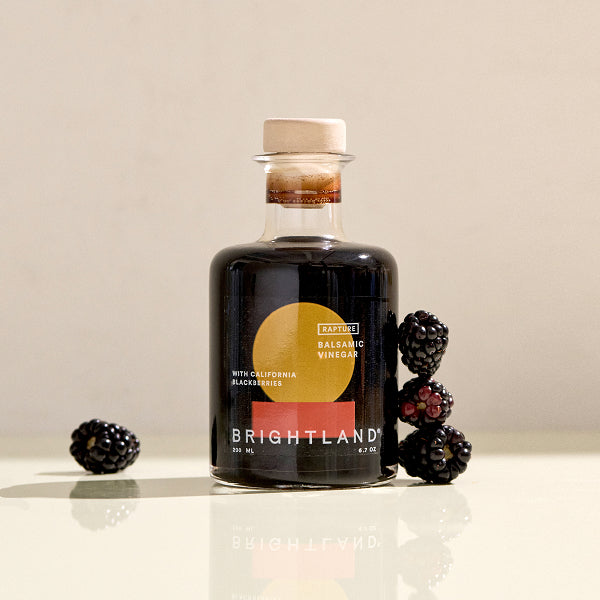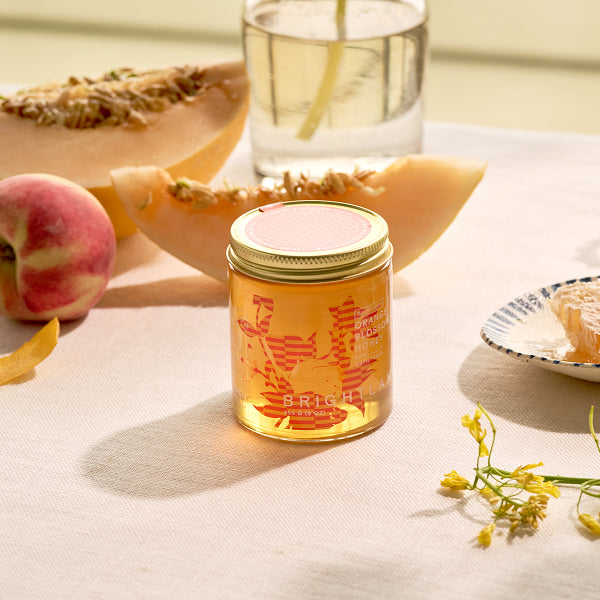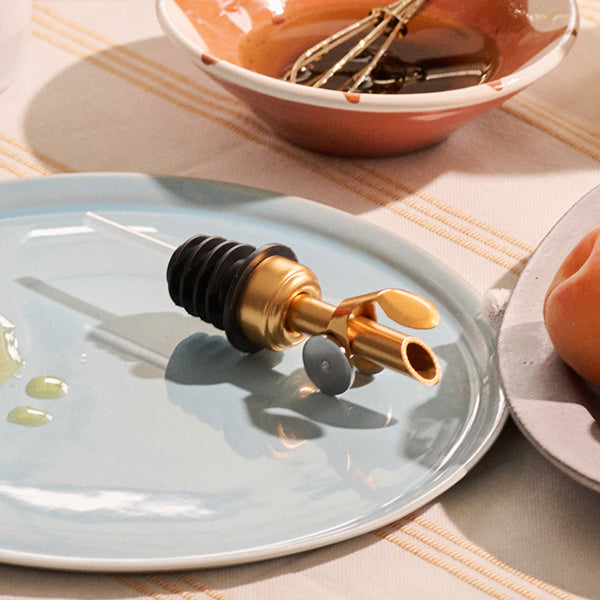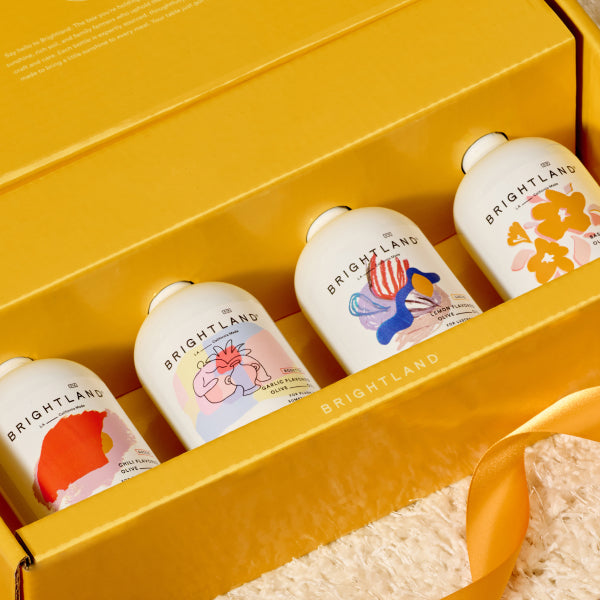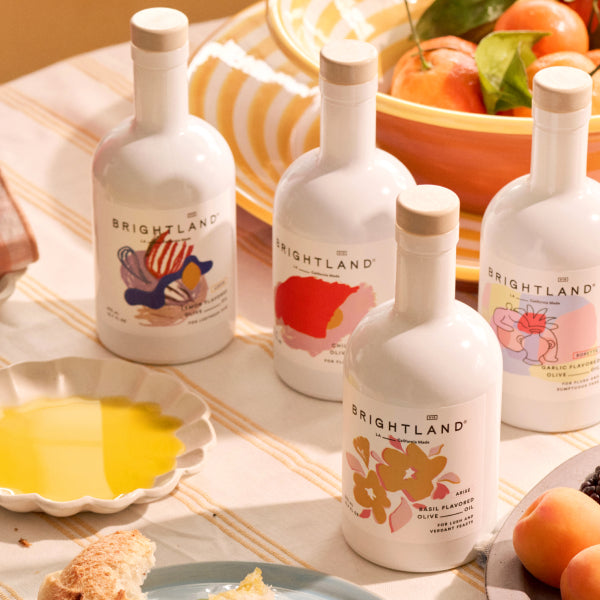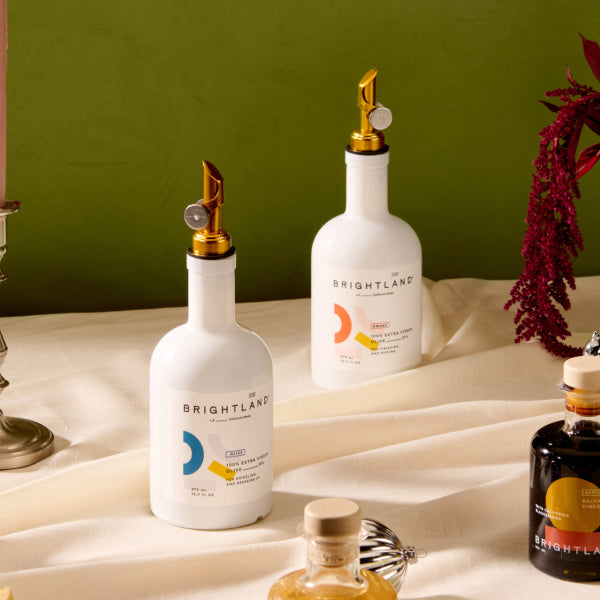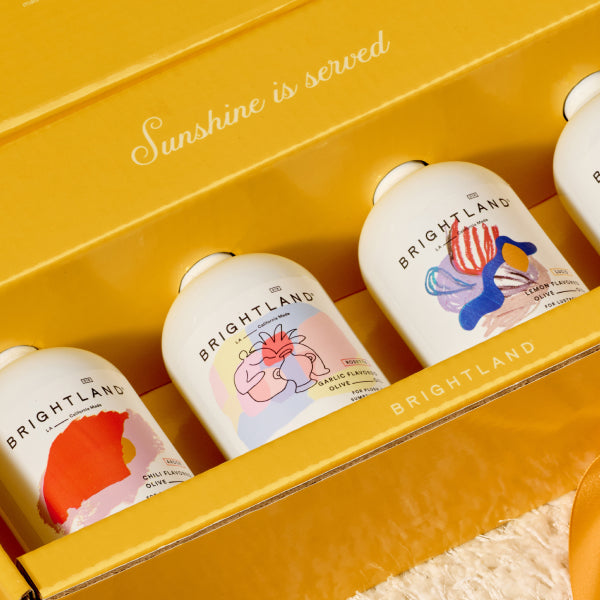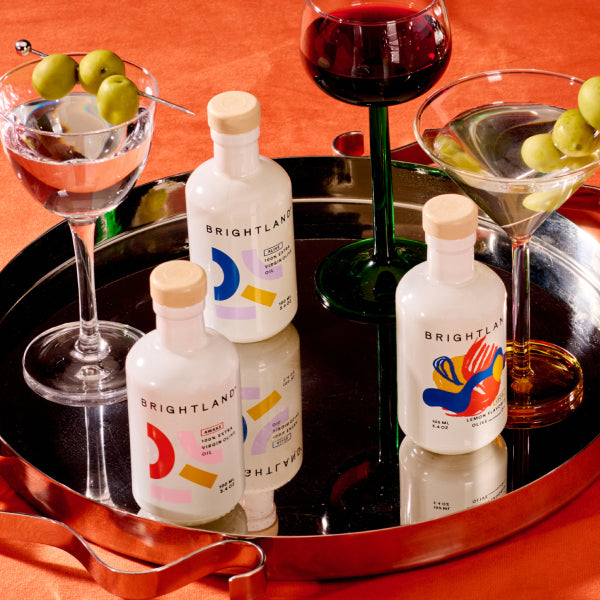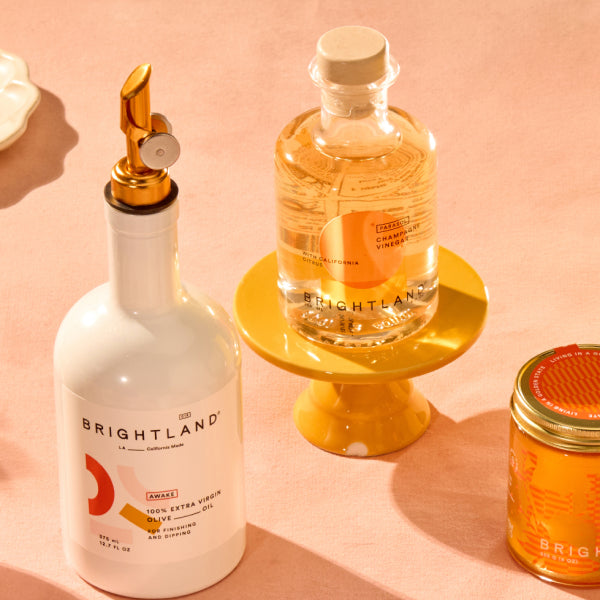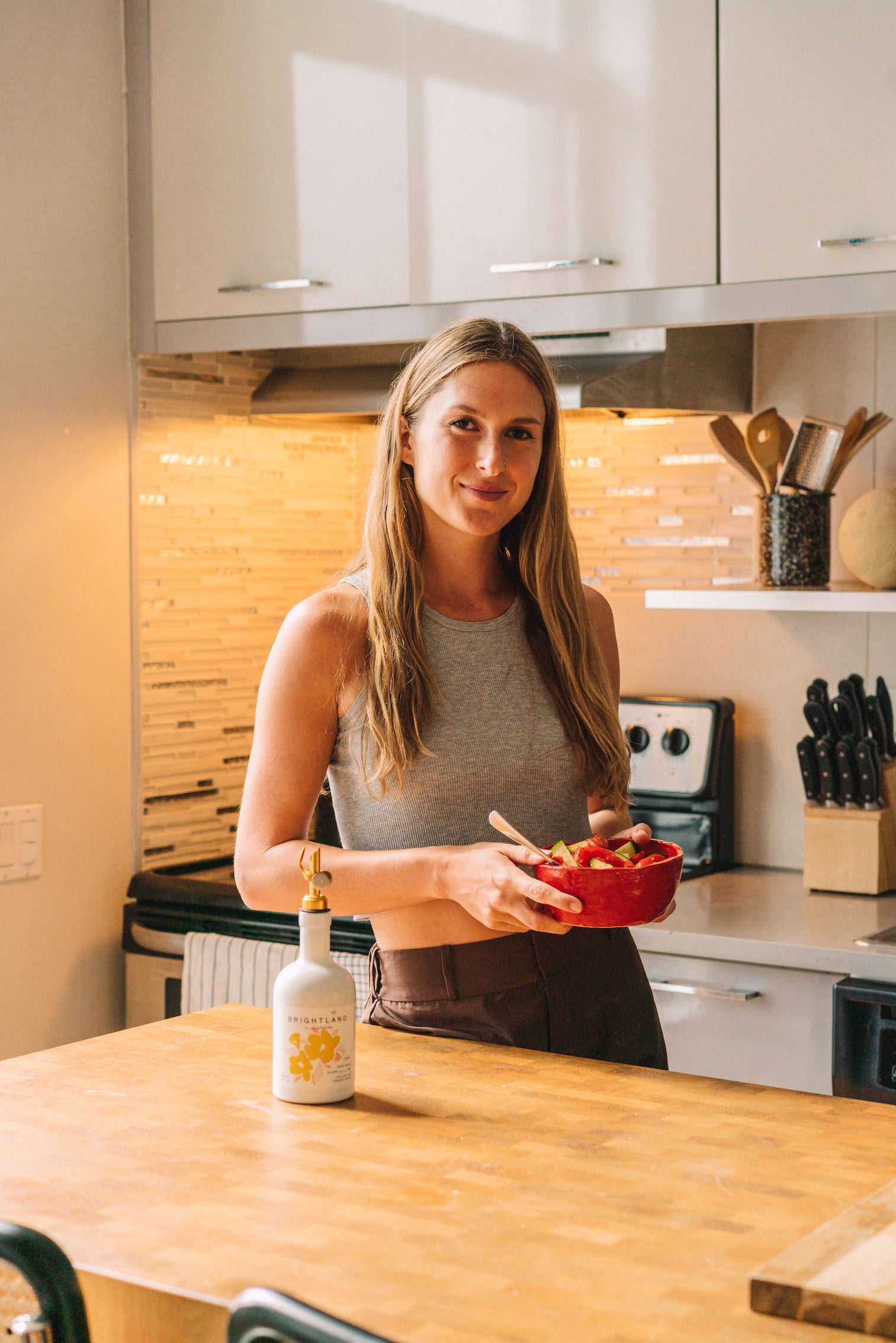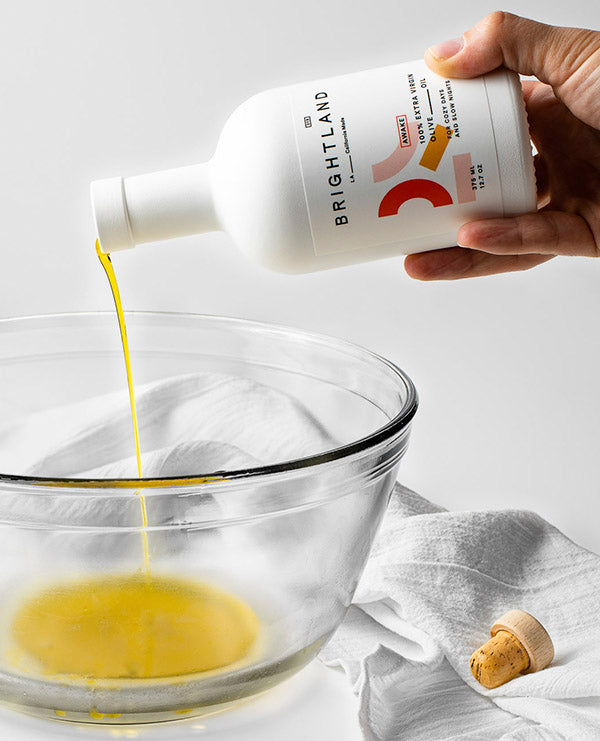[open type="rte"]
Balsamic vinegar and vinaigrette might sound similar, but they are actually two different things. In this quick guide, we will break down the essential differences between balsamic vinegar vs. vinaigrette and explain when to reach for which one while cooking.
[close type="rte"][open type="rte"]
Are balsamic vinegar and balsamic vinaigrette the same?
The short answer is no, balsamic vinegar and balsamic vinaigrette are not the same — but they are very similar. Balsamic vinegar is pure vinegar. Balsamic vinegar is dark brown in color and has a very robust, slightly sweet flavor.
Balsamic vinaigrette is a mixture made with balsamic vinegar, olive oil, sugar, salt and/or other spices. It is typically used as a salad dressing but has other uses in the kitchen as well. Basically, you cannot make balsamic vinaigrette without balsamic vinegar, but the two are not interchangeable.
[close type="rte"][open type="rte"]
When to use balsamic vinegar vs. vinaigrette
Balsamic vinegar is incredibly versatile, which is why it is one of the staple vinegars that most chefs keep stocked in their kitchen. It can be used to make everything from a marinade for meat or tofu to a coating for roasted root vegetables to a glazed reduction for a fruit dessert. If you are not regularly cooking with balsamic, then you are really missing out!
[close type="rte"][open type="images" small="true"]
[close type="images"][open type="rte"]
Balsamic vinaigrette is a little more limited in its applications but still delicious. Usually, it is used as a dressing for various types of salads, especially leafy greens and cold pasta. If you are looking to add a big shot of flavor to your healthy lunch, a balsamic vinaigrette is a great choice.
[close type="rte"][open type="rte"]
Buying balsamic vinegar vs. vinaigrette
When it comes to shopping for quality balsamic vinegar, you definitely get what you pay for. Unfortunately, a lot of the cheaper so-called balsamic vinegars are actually adulterated with other ingredients and simply dyed to look like balsamic vinegars. To further complicate matters, traditional balsamic vinegar is only available in two provinces in Italy, aged for 25 years, and has a high price tag to match its rarity. Learn more about how balsamic vinegar is made in our dedicated guide.
If you are looking to balance performance with cost, we recommend seeking out a high-quality California raw balsamic rather than a traditional Italian-aged balsamic, such as our Brightland RAPTURE vinegar. Look for a balsamic that is made on smaller farms with a high level of quality control so that you can rest assured that you are not receiving an adulterated product.
As for balsamic vinaigrette, we actually recommend making it yourself at home instead of buying it bottled at the store. Not only will this ensure that your balsamic vinaigrette is as fresh as possible, it will also give you total control over the ingredients and the flavor. This is a big plus for people who are trying to watch their sodium and/or sugar intake for health reasons since packaged balsamic vinaigrettes are often high in preservatives.
[close type="rte"][open type="rte"]
Making your own balsamic vinaigrette
Thankfully, making your own balsamic vinaigrette is super easy. To start, decide how much you want to taste the vinegar. For a more vinegar-forward recipe, mix two parts olive oil with one part vinegar. To tone down the vinegar, mix three parts olive oil with one part vinegar. Then, add in whatever spices and/or sugar that you want, taste testing to make sure the balance is right.
Always shake any vinaigrette directly before serving. The oil and vinegar will separate even if left to stand for only a few minutes. For the best flavor and freshness, we recommend mixing up a new batch of vinaigrette instead of trying to store it in the fridge, which might cause the olive oil to solidify.
[close type="rte"][open type="images" count="1"]
[close type="images"][open type="rte"]
Want to buy a high-quality California raw balsamic? Look no further than our RAPTURE balsamic vinegar, which is sourced from local family-owned farms for the highest quality product possible. Pick a bottle of our extra virgin olive oil and you will be well on your way to making the best-tasting balsamic vinaigrette of your life!
[close type="rte"]

